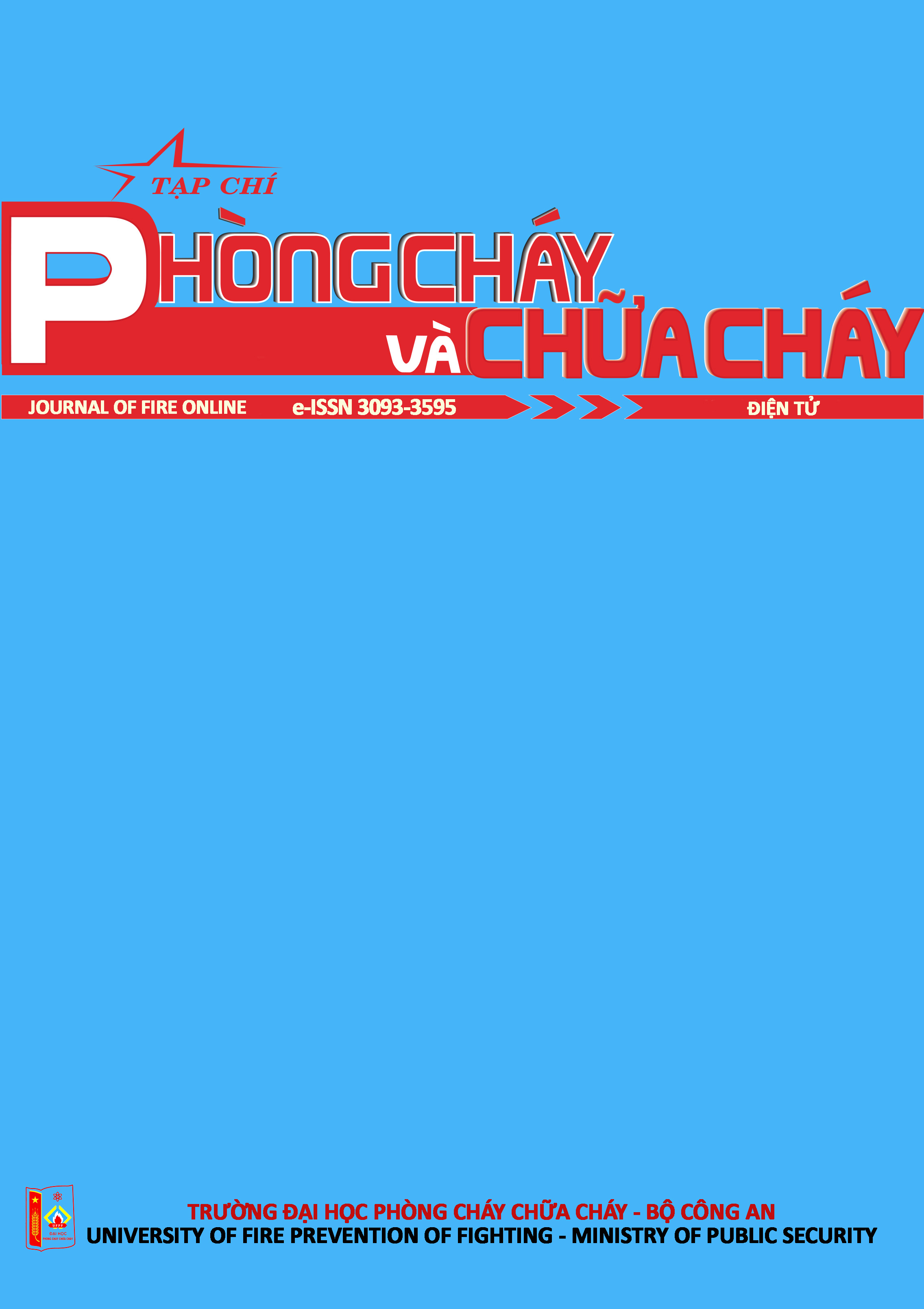GIẢI PHÁP ĐỒNG BỘ DỮ LIỆU GIỮA THIẾT BỊ GIÁM SÁT CÁ NHÂN VÀ THIẾT BỊ ĐIỀU KHIỂN TRUNG TÂM TRONG HỆ THỐNG HỖ TRỢ CHIẾN SỸ CHỮA CHÁY VÀ CỨU NẠN, CỨU HỘ KHI THỰC HIỆN NHIỆM VỤ BÊN TRONG NHÀ, CÔNG TRÌNH
DATA SYNCHRONIZATION BETWEEN FIREFIGHTER ALERT SAFETY SYSTEM AND CENTRAL CONTROL UNITS IN INDOOR FIREFIGHTING AND RESCUE SUPPORT SYSTEM
Các tệp bổ sung
- Bài viết: PDF
Trong bối cảnh đô thị hóa phát triển nhanh chóng, sự gia tăng ngày càng nhiều của các công trình cao tầng, công trình ngầm và khu công nghiệp hiện đại đã đặt ra những thách thức to lớn đối với lực lượng chữa cháy và cứu nạn, cứu hộ (CC&CNCH). Các tình huống khẩn cấp như cháy nổ, sập đổ cấu kiện hoặc sự xuất hiện của môi trường độc hại, thiếu oxy trong không gian kín đòi hỏi cán bộ, chiến sĩ CC&CNCH phải thực hiện nhiệm vụ trong điều kiện nguy hiểm, áp lực cao và thường xuyên thay đổi. Thực tiễn này đặt ra yêu cầu cấp thiết về việc xây dựng một hệ thống có khả năng giám sát liên tục, cảnh báo sớm và hỗ trợ kịp thời đối với chiến sĩ khi gặp sự cố trong quá trình thực hiện nhiệm vụ bên trong các công trình. Nhằm đáp ứng yêu cầu trên, bài báo đề xuất giải pháp đồng bộ hóa dữ liệu thời gian thực giữa thiết bị giám sát cá nhân (Firefighter Alert Safety System) – một bộ thiết bị đeo thông minh tích hợp đa cảm biến – và hệ thống điều khiển trung tâm. Thông qua việc thu thập và truyền tải liên tục các thông tin về vị trí, trạng thái vận động, cũng như các thông số sinh lý của từng chiến sĩ, giải pháp này giúp trung tâm chỉ huy giám sát hiệu quả tình hình thực địa, đưa ra chỉ đạo kịp thời, nâng cao hiệu quả tổ chức chữa cháy và cứu nạn, cứu hộ và bảo đảm an toàn cho lực lượng làm nhiệm vụ.
giải pháp đồng bộ dữ liệu, chữa cháy và cứu nạn, cứu hộ, sự cố
In the context of rapid urbanization, the proliferation of high-rise buildings, underground structures, and modern industrial complexes has posed substantial challenges for the Fire and Rescue (F&R) forces. Critical incidents such as explosions, structural collapses, or the presence of toxic and oxygen-deficient environments within confined spaces require F&R police to operate under hazardous, high-pressure, and constantly changing conditions. These operational realities underscore the urgent need for a system capable of continuous monitoring, early hazard detection, and timely support for firefighters encountering emergencies during operations inside buildings. To address this need, this paper proposes a solution for real-time data synchronization between the Firefighter Alert Safety System (FASS)—a sensor-integrated wearable device—and the centralized control unit. By continuously acquiring and transmitting data related to individual location, physical activity status, and physiological indicators, the system enables command centers to to effectively monitor field conditions, issue timely directives, enhance rescue coordination, and safeguard the operational safety of firefighting personnel.
data synchronization solution, firefighting and rescue, incident
Tài liệu tham khảo
1. U. Raza, P. Kulkarni and M. Sooriyabandara, "Low Power Wide Area Networks: An Overview”, in IEEE Communications Surveys & Tutorials, vol. 19, no. 2, 2017, pp. 855-873.
2. Hoàng Lê Trung, “Mạng LPWAN cho các ứng dụng IoT”, http://www.cuctanso.vn/, 02/2019.
3. LoRa Alliance®, https://lora-alliance.org/
4. M. Bor and U. Roedig, “LoRa Transmission Parameter Selection”, 2017 13th International Conference on Distributed Computing in Sensor Systems (DCOSS), Ottawa, ON, Canada, 2017, pp. 27-34.
5. D. Magrin, M. Capuzzo and A. Zanella, “A Thorough Study of LoRaWAN Performance Under Different Parameter Settings”, in IEEE Internet of Things Journal, vol. 7, no. 1, Jan. 2020, pp. 116-127.
6. U. Raza, P. Kulkarni, and M. Sooriyabandara, “Low Power Wide Area Networks: An Overview”, IEEE Communications Surveys and Tutorials, vol. 19, no. 2, year 2017, pp. 855–873.
7. M. Bor, J. Vidler, and U. Roedig, “LoRa for the Internet of Things”, in Proceedings of the 2016 International Conference on Embedded Wireless Systems and Networks, Graz, Austria, February 2016, pp. 361–366.
8. M. Bor and U. Roedig, “LoRa transmission parameter selection”, in Proceedings - 2017 13th International Conference on Distributed Computing in Sensor Systems, DCOSS 2017, Ottawa, ON, Canada, 2018, pp. 27–34.
9. A. Potsch, F. Haslhofer, P. Albert, and F. Haslhofer, “Practical Limitations for Deployment of LoRa Gateways”, in 2017 IEEE International Workshop on Measurement and Networking (M&N), Naples, Italy, 2017, pp. 1–6.
10. LoRaWAN, https://www.mobilefish.com/
11. A. M. Yousuf, E. M. Rochester, B. Ousat and M. Ghaderi, “Throughput, Coverage and Scalability of LoRa LPWAN for Internet of Things”, 2018 IEEE/ACM 26th International Symposium on Quality of Service (IWQoS), Banff, AB, Canada, 2018, pp. 1-10.






